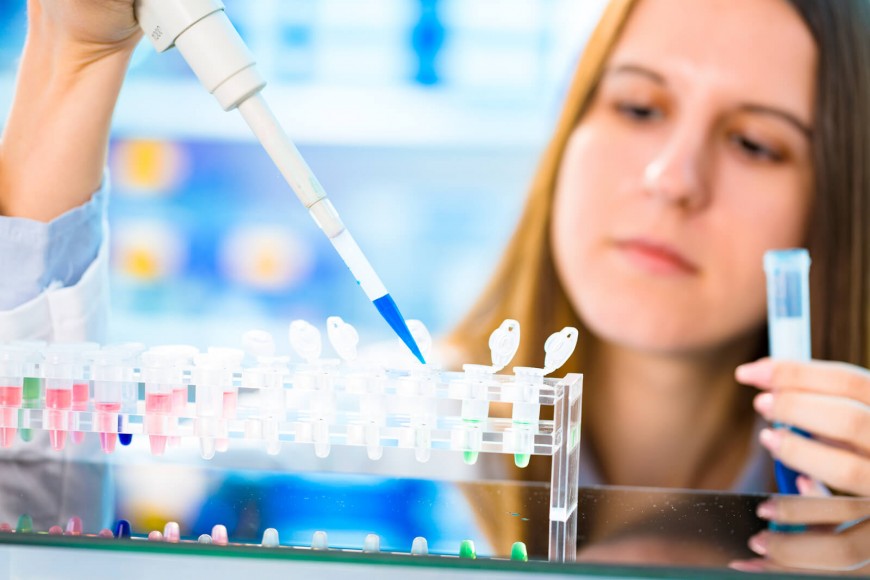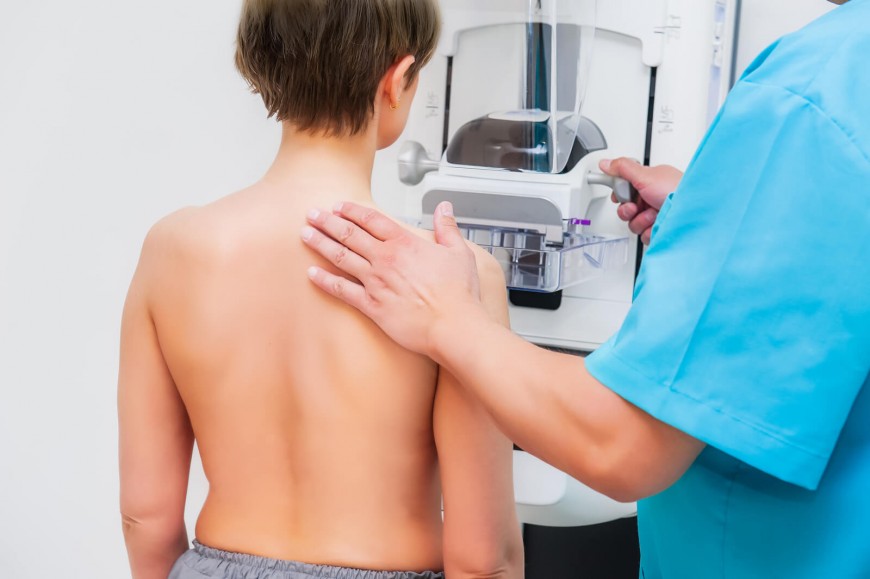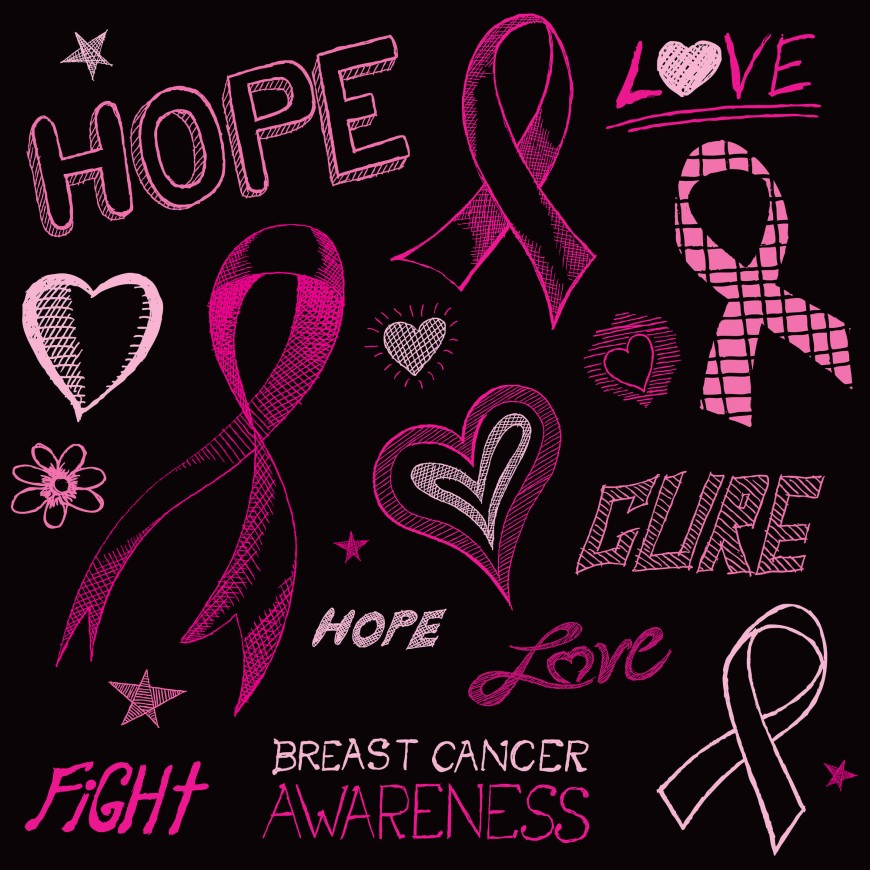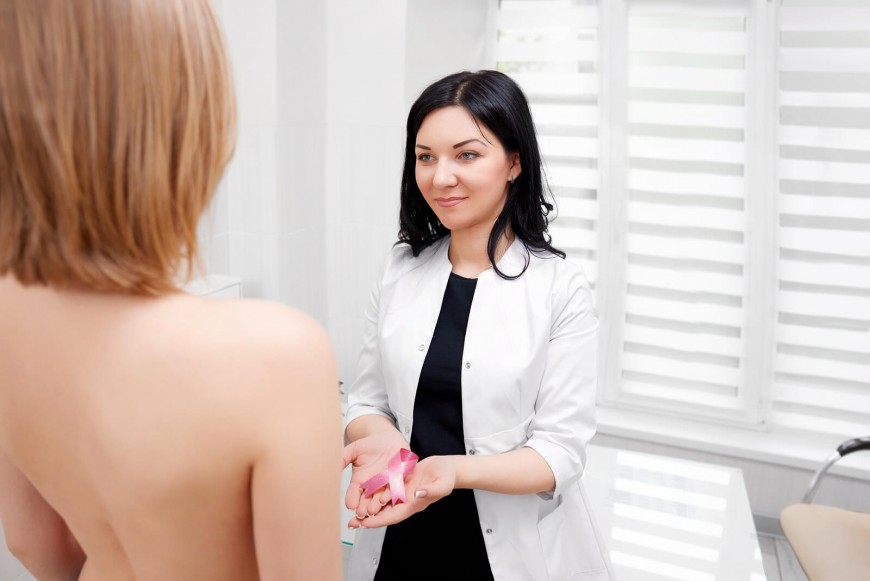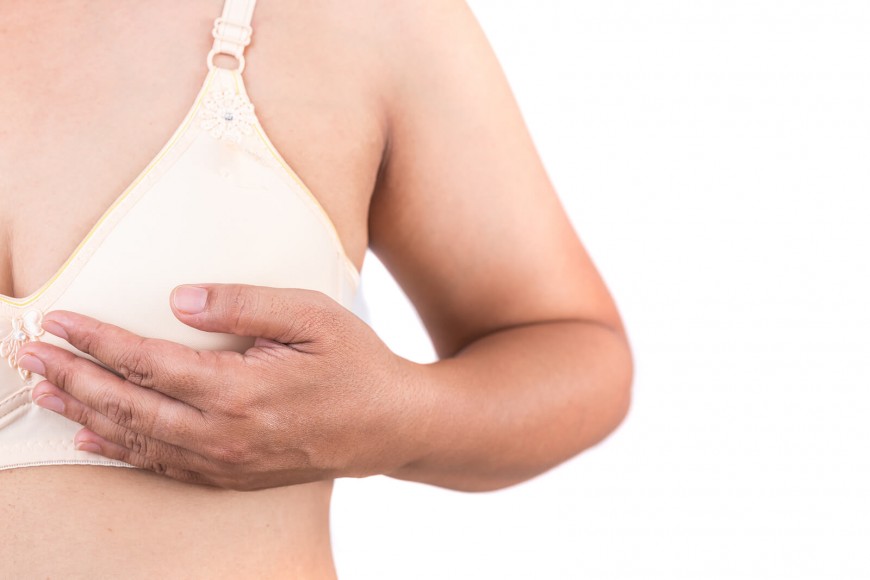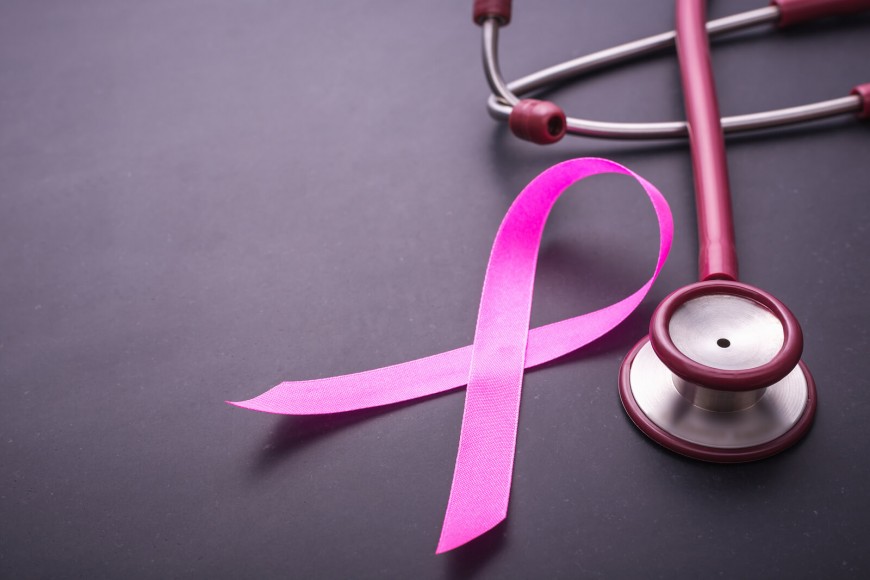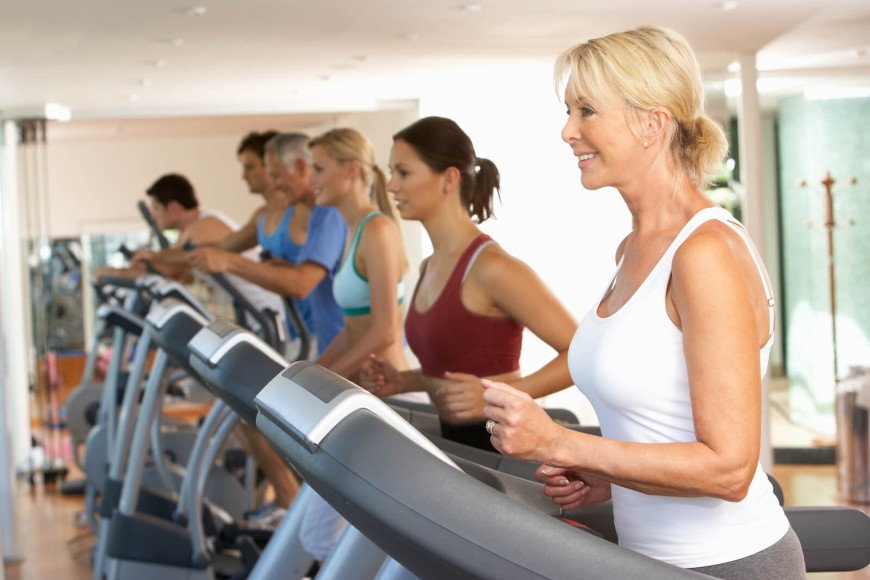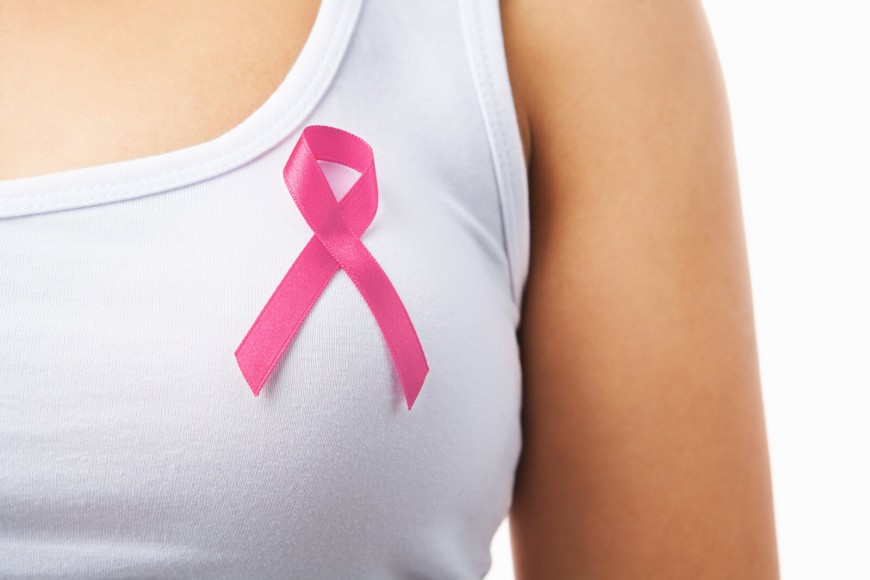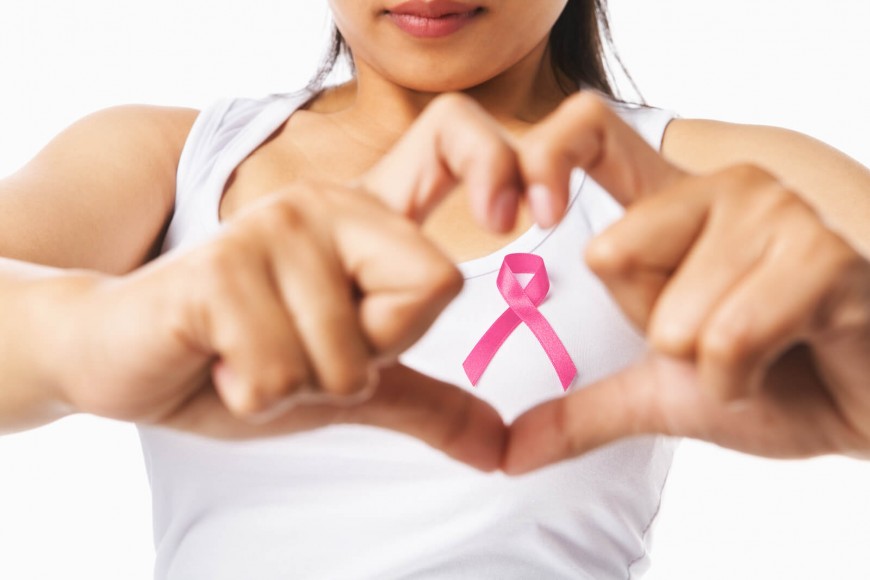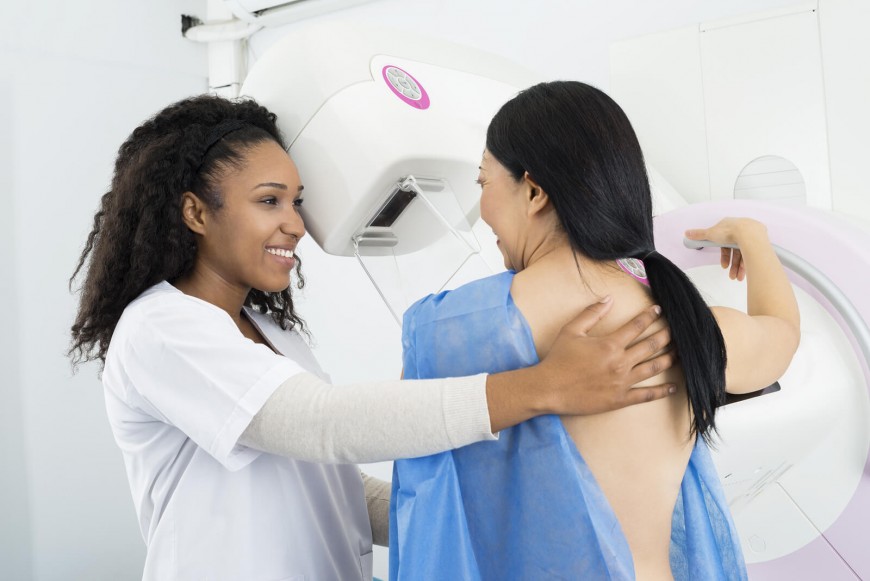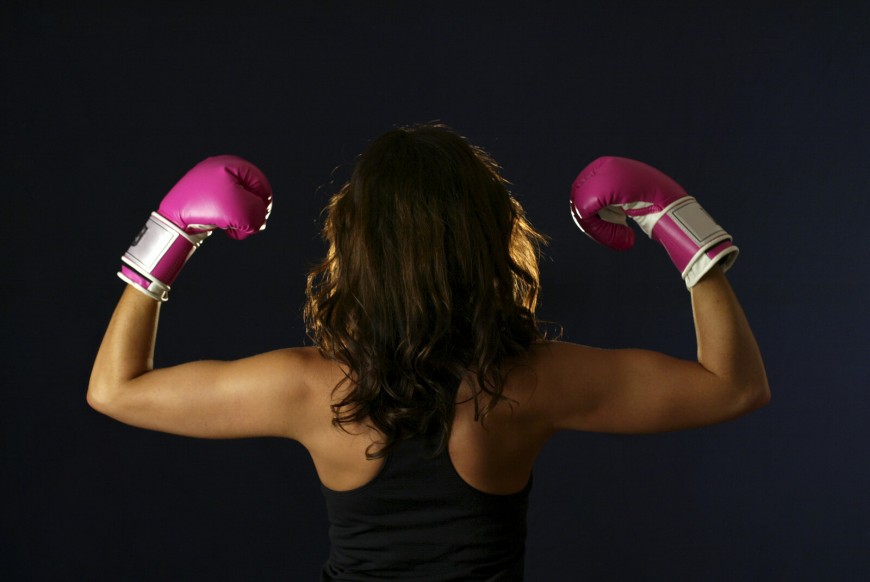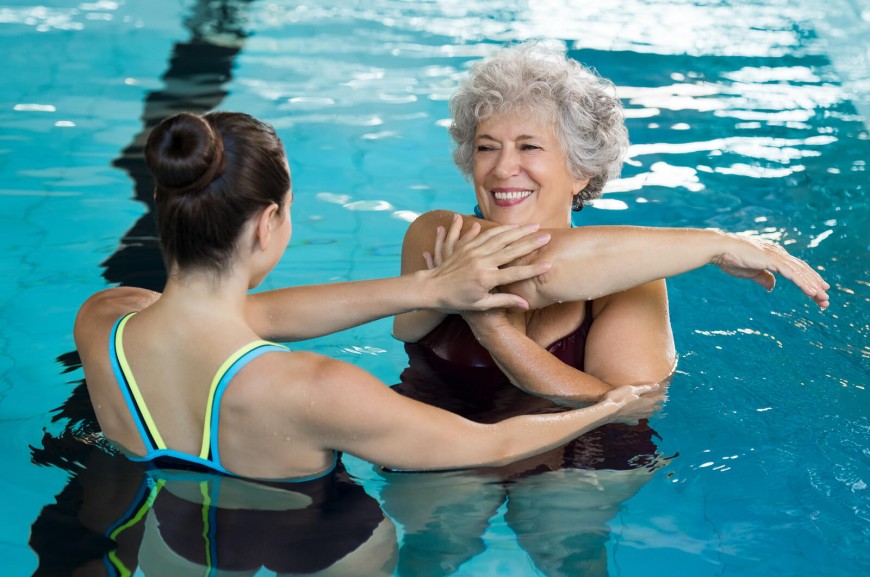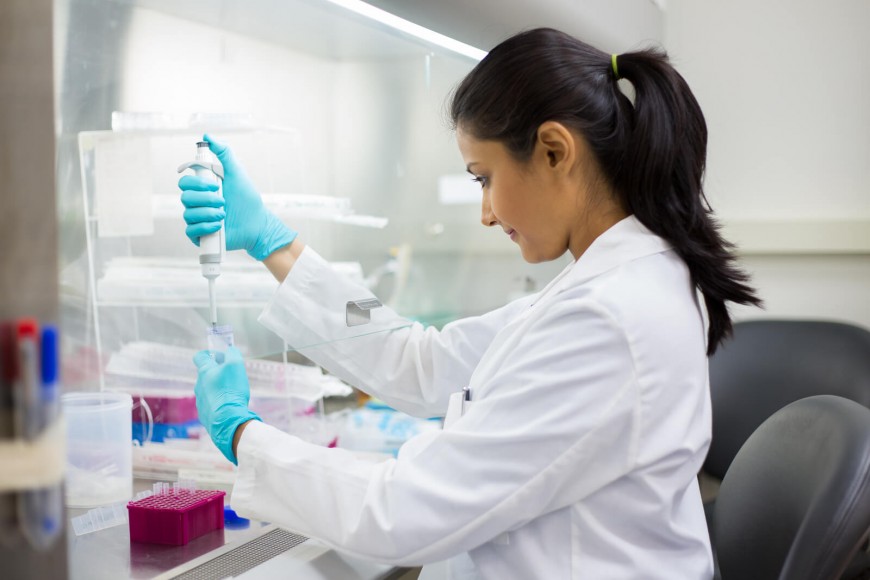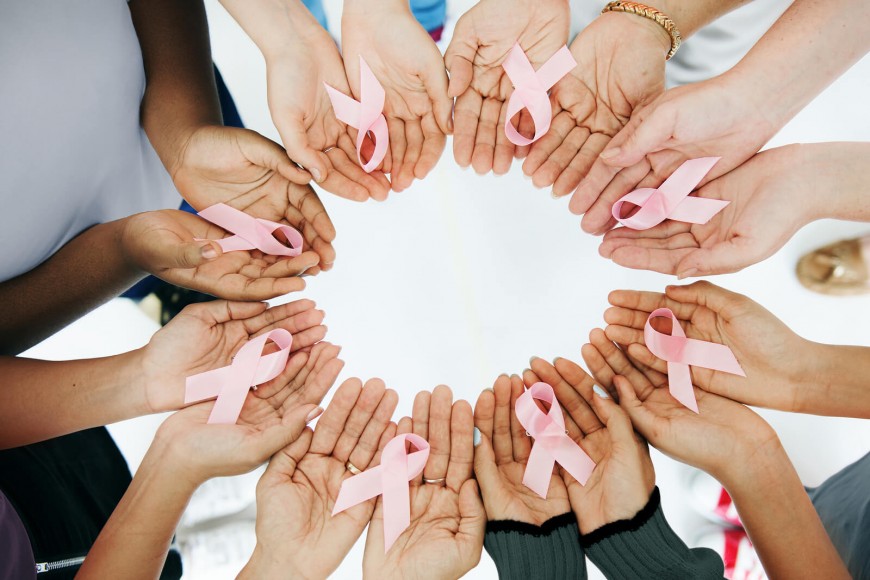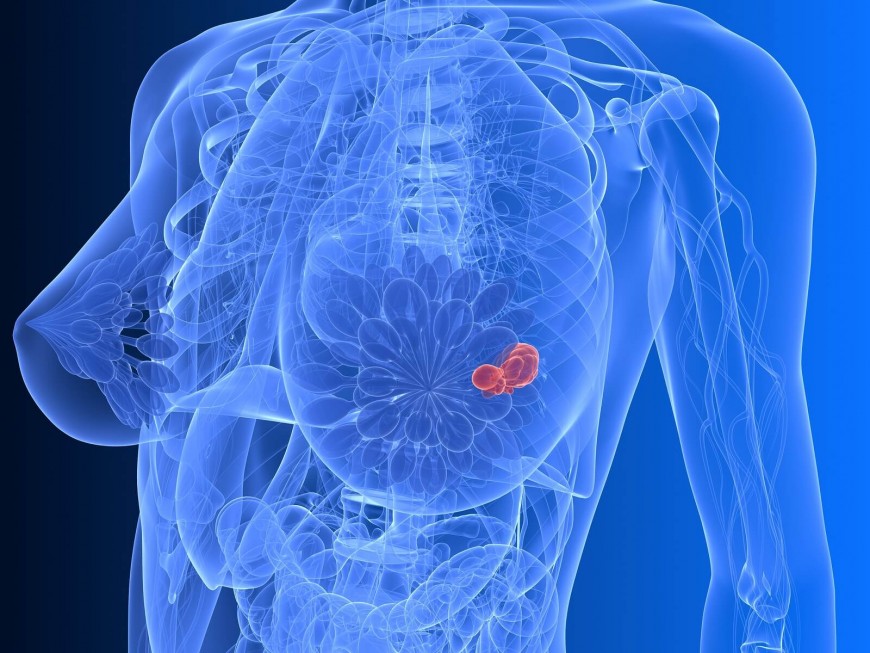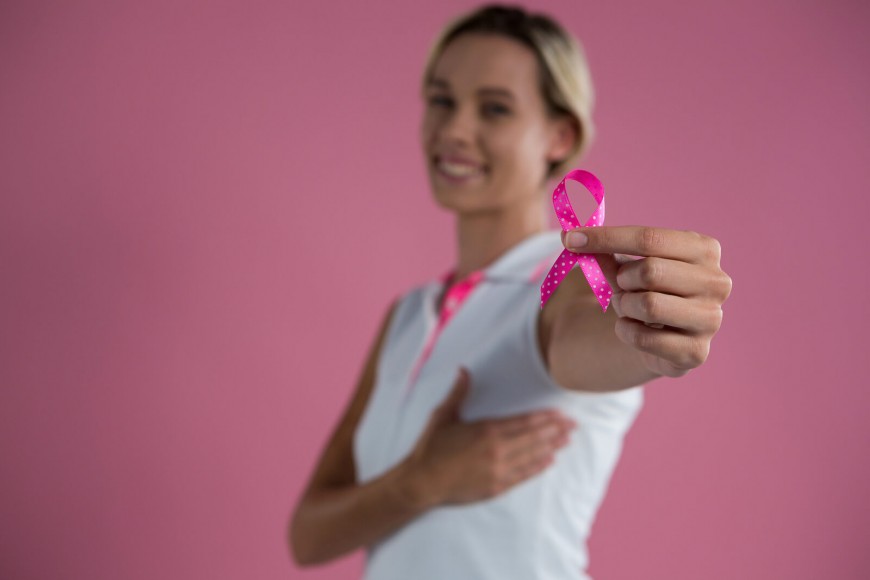Mastectomy tops are essential for any breast cancer survivor’s wardrobe. As is staying on top of the latest clinical developments.
Loading the content... Loading depends on your connection speed!
An MP has spoken out about the risks of developing breast cancer in women with dense breasts, saying more awareness and understanding is needed.
Mastectomies can be used both to treat breast cancer and as a preventative measure by some women, but one breast cancer survivor thinks we need to talk more about their use, and whether they’re always necessary.
If you are planning a holiday to help you after a course of treatment for breast cancer then booking the travel insurance might be one of the parts of planning you are least looking forward to.
Scientists at King’s College London believe they have created a test that is able to identify which women with lymph-node positive breast cancer are most likely to develop incurable secondary tumours.
If you feel unhappy about your breasts – you might feel that they’re too large or too small, or be unhappy about a host of other variables – then you are certainly not alone.
Researchers at the Case Comprehensive Cancer Center at Case Western Reserve University School of Medicine in the US have discovered that an existing drug used to treat other conditions, including multiple sclerosis, could be effective in fighting triple-negative breast cancer.
Research shared at the San Antonio Breast Cancer Symposium this month has revealed that overweight or obese women who lose weight can significantly reduce their risk of developing breast cancer.
The Telegraph reported on the study, which was carried out by researchers in the US who tracked over 61,000 women aged between 50 and 79 for 11 years.
They found that women who lost five per cent of their body weight cut their risk of breast cancer by 12 per cent, while postmenopausal women who slimmed down by 15 per cent saw their chances of developing the disease drop by 37 per cent.
Dr Rowan Chlebowski, lead researcher and part of the Department of Medical Oncology and Therapeutics Research at City of Hope in Duarte, California, told the newspaper that this study indicates a weight loss strategy can be effective in lowering the risk of breast cancer among postmenopausal women.
“Relatively modest weight loss was associated with significant lowering of breast cancer incidence,” he asserted.
Chief executive at Breast Cancer Now Baroness Delyth Morgan explained that reducing your body fat levels after the menopause also reduces the oestrogen levels in your body, with lower oestrogen levels known to reduce your risk of developing breast cancer.
Meanwhile, Cancer Research UK recently highlighted findings from an unpublished study which found that more intense chemotherapy doses can cut the risk of early stage breast cancer returning after treatment.
If you’re battling breast cancer and are looking for mastectomy swimwear, come to us to find something that’s the perfect fit.
Businesswoman Jacqueline Gold CBE, who’s best known as the boss of Ann Summers, has revealed that she has been battling breast cancer since last October in an exclusive interview with Hello! magazine.
She told the publication that she was diagnosed after discovering a pea-sized lump in her breast. Jacqueline has undergone 30 sessions of chemotherapy and had a lumpectomy, and while she won’t get the official all-clear for another two years, she explained that she’s recovering and was told that the cancer was gone in April of this year.
When she received the diagnosis, Jacqueline came up with a strategy for coping with the illness, which included only telling her close friends and family about her diagnosis.
The 57 year old explained that she didn’t want people to treat her differently while she was undergoing treatment, which is why she kept it secret.
“I’m lucky I’ve lived a charmed life, but we’re all equal when it comes to health; no matter how hard you’ve worked or how fortunate you are, it doesn’t discriminate,” Jacqueline told the magazine.
During her treatment, she altered her diet, cutting out sugar, meat and alcohol, as well as practising yoga and doing early-morning workouts to help keep her strength up.
Of course, chemotherapy affects people differently, so it’s important to only do what you feel able to. Breast Cancer Care points out that even small amounts of gentle exercise, such as walking, can make you feel more energised though, so it’s worth doing even a little if you can.
If you’re looking for mastectomy tops, take a look at our range today.
After battling breast cancer, you may be left feeling unconfident, especially after a mastectomy – that’s the whole reason behind our range of mastectomy clothing. Getting a good fit is the least you deserve to try and make the whole process a little bit more comfortable and bearable.
It’s not just your clothes, however, but if you’ve undergone chemotherapy and want to wear a wig, getting just the right style can make all the difference. For most people, it’s a whole new world, so The Health Site has de-mystified the process.
There are three different types, or levels, of wigs that you can buy. The most expensive are lace-front wigs. This type blends with your natural hairline with the use of makeup and can be almost undetectable in this area. Monofilament wigs are another type, which are handmade and look natural whilst also allowing your scalp to breath. The last and the most affordable option are machine-made wigs, which are widely available and the most common type many cancer-sufferers will buy.
Make sure you do your research and find something that is not only comfortable, but fits perfectly. Spend some time trying on lots of different choices until you find one (or even more) which works for you. Different skin types may react differently to certain types of wigs, so consider that too. If looking online, search for customer reviews as these always give an honest insight.
However, a full wig isn’t the only option. Another lightweight option to try, so great if you are having hot flushes, is a light weight head scarf with a velcro fringe so you can change your look.
Regular washing is required to maintain a wig’s lifespan. One top tip is to use a fabric softener rather than standard conditioner as it works wonders. Also look into the right temperature your wig can stand if using a hairdryer, as machine made wigs can be delicate when exposed to heat.
A Norwich-based charity is hoping that care packages will provide a boost to women being treated for breast cancer at Norfolk and Norwich University Hospital (NNUH).
Little Lifts is the brainchild of Oa Hackett, 31, who underwent six rounds of chemotherapy at NNUH after being diagnosed with breast cancer in 2014.
She set up the charity because the care packages and gifts her friends and family sent her gave her a boost during her gruelling treatment.
The Norwich Evening News revealed that Ms Hackett’s efforts now mean that every woman undergoing treatment for breast cancer at NNUH will receive a little pick-me-up box including small gifts and edible treats, all of which have a purpose.
Speaking to the Eastern Daily Press last month, she explained why she thinks these care packages will help.
“It makes you remember you’re not alone,” she stated, revealing that receiving small gifts from friends and family throughout her treatment reminded her that they were still thinking of her, even if their lives carried on as normal.
If you have been diagnosed with breast cancer and are undergoing treatment, you should think about the benefits that exercise can have for you.
One of the items in the Little Lifts box is a pedometer, to encourage people to keep walking during their treatment, and a recent study suggested that regular exercise can be a good way to take the edge off the side effects of cancer treatment.
Swimming is a good low-impact exercise and one that you can take at your own pace. Take a look at our mastectomy bathing suits if you’d like to get in the pool to aid your recovery.
Women who are overweight or obese are less likely to detect cancerous lumps in their breasts, a new study from The Karolinska Institute in Sweden has suggested.
In the UK, women between the ages of 50 and 70 are invited for breast cancer screenings every three years but although being overweight does increase the risk of developing the disease, it is not considered for setting these screening intervals at the moment, the BBC reports.
The study also found that women who were overweight were more likely to have bigger tumours when detected either at a mammogram or between screenings. This could be down to the fact that their breasts were larger so the tumour was harder to find, or because their tumours grew at a faster rate.
Lead author of the report D Fredrik Strand told the news source: “Our study suggests that when a clinician presents the pros and cons of breast cancer screening to the patient, having high BMI should be an important ‘pro’ argument. In addition, our findings suggest that women with high BMI should consider shorter time intervals between screenings.”
According to Cancer Research UK, there are major studies that confirm being obese or overweight does increase the risk of various cancers – and the World Health Organisation has also gone so far as to say that after tobacco overweight or obesity are the most important known avoidable causes of the disease. In England, around 60 per cent of adults are classed as either being overweight or obese.
For mastectomy clothing and more, check out our online store.
A student has not let breast cancer treatment dent her confidence one bit, posing for a striking post-mastectomy photo shoot that could inspire.
Jessica Florence, an aspiring architect, was recently given the all-clear after a three-year battle with breast cancer, the Metro reported, and now she is celebrating by posing topless wearing her scar with pride.
The student had to move back home and give up her studies while undergoing treatment, which included six gruelling rounds of chemotherapy in as many months.
She revealed that she would try and rise above the unpleasant symptoms of her treatment including stomach pains and sensitive skin by wearing lipstick and heels to the treatment centre, which helped her feel good in spite of everything else.
Florence said having a mastectomy and losing her hair made her feel like she was no longer a woman, but she snapped out of this mindset and teamed up with photographer Nehemiah Nash to create the striking imagery.
“My breasts are not going to define me. I define myself as a woman,” she told the newspaper.
“I wanted to share my vision of what I thought breast cancer was. I had these jeans and a jacket and I wanted to go topless to show people what I have been going through,” she said.
If Jessica Florence has inspired you to reclaim your mojo, browse our collection of mastectomy clothing to help you feel as good as you ought to. Brave Ladies’ Floral Safari Halter-Neck Bikini Top is a colourful way to express your femininity post-mastectomy, and there are many more to choose from.
If you are shopping for mastectomy swimwear because you are currently undergoing treatment for breast cancer, a new study has revealed that a dip in the pool may be just the ticket to help take the edge off the side effects of treatment.
The International Federation of Gynaecology and Obstetrics has reported that research led by the University of Porto in Portugal found that regular exercise is an effective way of reducing the unpleasant side effects of treatment for breast cancer.
Symptoms including fatigue and pain were proven to lessen in women undergoing advanced breast cancer care if they followed a tailored exercise plan including aerobic and resistance training.
Professor of exercise physiology Eduardo Oliveira said the tailored exercise programmes were all achievable for the women who participated in the research and there were “measurable benefits to their health and wellbeing”.
He added that although the benefits of exercise are well established in normal life, little is known about its effects in patients with advanced breast cancer.
Oliveira noted, however, that those undergoing treatment for breast cancer find it difficult to live a so-called normal life, so the right exercise plan is something their healthcare provider should support them in pursuing.
Treatments such as chemotherapy are known for their impact on the patient but research from the University of Texas MD Anderson Cancer Center revealed that Tibetan yoga could help patients get a better night’s sleep.
Dr Lorenzo Cohen said that Tibetan yoga was selected for the study because it is a very gentle yoga practice, allowing patients to rest at regular intervals during a session.
We know how difficult it can be to regain your confidence after having a mastectomy. Even if you find mastectomy swimwear that you’re happy with, it can still take time before you’re fully confident with your body again. It’s a life-changing operation and one that you don’t want to undergo unnecessarily.
But now there has been progress in the form of a new genetic test that can further refine a person’s individual risk of developing the disease. While it’s well known that carrying the BRCA1/2 gene can increase your risk of developing breast cancer, not everyone with the gene will.
A one-size-fits-all approach to the outcome of genetic testing isn’t the way to go, with this new research able to refine the risk level for those who have the mutation and thereby enable doctors to provide more tailored advice on the next steps.
In some cases, this could still mean a pre-emptive mastectomy, but in others the risk may be low enough that this isn’t required.
Charity Prevent Breast Cancer part-funded the research, which was conducted by Professor Gareth Evans and his team at Manchester University NHS Foundation Trust.
The test, which is due to be used in clinical practice in the coming six months, uses DNA analysis alongside other risk factors such as family history of the illness, height and weight, and age of first period and menopause, to build up a more detailed and personal picture of each patient’s risk.
Professor Evans commented: “BRCA1 and BRCA2 are just part of what we should be looking for when assessing risk.”
He added: “This new test will help women at risk of familial breast cancer to make more informed decisions about their care.”
Although many more women are now aware of genetic mutations such as BRCA1/2, there is still not enough awareness of the physical signs of breast cancer, an Avon survey recently revealed, with 58 per cent of women questioned uncertain of the outward signs of breast cancer.
Building up the confidence to be able to wear mastectomy swimwear after an operation is a tough road, but one that when you conquer will feel so empowering.
As October is breast cancer awareness month, alongside the reminders of those loved ones we’ve lost, we’re sure to be inspired by so many survivor stories where women have overcome the disease and learned to love their new bodies.
Here’s one such story from the Metro – 50 year old Maggie Prentice, who was told 10 years ago that she only had a 10 per cent chance of surviving her ‘incurable’ cancer diagnosis, posing for a lingerie shoot alongside fellow survivors.
The shoot was for a lingerie brand down in New Zealand where Maggie lives, put together by an organisation which aims to improve the quality of life of those who live with and have survived the disease.
Maggie looks great, but just because somewhere is brave enough to go through with a lingerie shoot doesn’t mean they don’t have body confidence issues.
“It was something I felt uncomfortable about as I was heavier than ever and having had a mastectomy and everything, but it was something that I just wanted to do for me,” Maggie told the Daily Mail Australia.
Maggie diagnosis came after she found her breasts were misshapen while showering – something she hadn’t noticed before. Two months after this first visit to the doctors, Maggie was told her cancer was incurable – something made all the worse by the fact that her husband was diagnosed with cancer at the same time.
But Maggie is still going strong, and her husband has just been discharged from oncology with no further treatment required.
If you are looking for the best mastectomy tops to boost your confidence then you have come to the right place.
There are myriad ways that breast cancer can affect you, mentally and physically, but did you know there is a new potential cause of breast cancer that researchers are investigating?
It has long been understood that the microbiome in the gut (all the bacteria and fungi that live there) could play an important role in disease and the development of it.
A new line of enquiry has confirmed what many breast cancer researchers have known for a long time: that breast tissues has a microbiome of its own, and that this may play a role in the development of cancer.
A research team have shown that healthy breast tissue contains more of the bacterial species Methylobacterium, than it does in those with breast cancer.
“Our hope is to find a biomarker that would help us diagnose breast cancer quickly and easily. In our wildest dreams, we hope we can use microbiomics right before breast cancer forms and then prevent cancer with probiotics or antibiotics,” said co-senior author Charis Eng, chair of Cleveland Clinic’s Genomic Medicine Institute and director of the Center for Personalized Genetic Healthcare
The team also found that breast cancer patients’ urine samples had higher levels of gram positive bacteria than people without breast cancer, though scientists are unsure what roll this plays.
The study has been published in the journal Oncotarget.
Less than half of women are confident that they would know the outward signs of breast cancer, a new survey has found.
The global survey conducted by Avon questioned 19,000 people and revealed that 42 per cent were confident of being able to recognise outward changes to their breasts as a sign of breast cancer.
But that still leaves 58 per cent who are unsure of what the early signs of breast cancer are. Worryingly, the survey also found that 60 per cent would wait to seek medical advice because of embarrassment, fear, or because they don’t have regular access to a doctor.
Dr Paul Goss, chairman of the Avon Foundation Scientific Advisory Board, commented: “There is still much work to be done in raising awareness of breast cancer, particularly its signs, risks and how to act on concerns about it.”
According to the NHS, possible outward signs of breast cancer include dimpling on the skin of your breasts, a rash on or around your nipple, a change in the shape or size of your nipple, a lump or swelling in either armpit and either of your breasts changing shape or size.
Most women are aware that lumps need to be checked as soon as they are found, but this isn’t the only indication that you could have the disease.
Awareness of breast cancer has certainly grown in recent years and with celebrities such as Olivia Newton-John and, most recently, Julia Louis-Dreyfus openly sharing their battles with the illness there has been more discussion and openness about it.
However, it’s clear that more needs to be done to get the message across. If you need mastectomy swimwear after your own battle with cancer, take a look at our range today.
Grease star Olivia Newton-John has opened up about her latest battle with breast cancer, after learning several months ago that the disease had returned.
The actress had spent 25 years in remission before the news was broken that the cancer had returned and has spread to her lower back region. Despite the revelation, Ms Newton-John has resolved to remain upbeat.
In the past, Ms Newton-John underwent a partial mastectomy, chemotherapy and breast reconstruction as part of her journey to recovery. Speaking to the Today show, the star said that she believes it’s possible to live with cancer as long as the necessary care is taken.
“I think you can live with cancer, like you can live with other things if you take care of yourself,” she said, adding that she made a conscious decision to have a positive outlook in spite of the news.
The actress said that her battles with cancer inspire her to help others experiencing the disease; she was instrumental in establishing the Olivia Newton-John Cancer Wellness & Research Center in Melbourne, Australia – a comprehensive cancer centre that also provides therapy, art activities, yoga and massage, among other services, for cancer patients and their families.
She went on to comment that having cancer has taught her that she is stronger than she thought and that she prefers to be called a cancer thriver rather than a survivor, saying: “Survivor sounds like someone clinging onto a lifeboat – a thriver’s someone that’s already off the boat and on land.”
Inspired by breast cancer fighters like Olivia Newton-John, our range of breast cancer swimsuits are designed to help you stay positive and body confident during this challenging time. Shop the collection here.
Breast cancer patients currently going through chemotherapy might want to give Tibetan yoga a go, as new research from the University of Texas MD Anderson Cancer Center has found that it can help you sleep better.
Sleep disturbances, insomnia, excessive drowsiness and poor sleep quality are some of the most common side effects of chemotherapy. But the study found that Tibetan yoga – which keeps you in continuous movement instead of stationary positions – helps people to sleep better, the Daily Mail reports.
The study authors now hope that these findings can help prepare women with breast cancer diagnoses to face chemotherapy – and they want doctors to now recommend this practice to their patients.
Dr Lorenzo Cohen explained that Tibetan yoga was picked for the research because the practice is so gentle, with patients sat down throughout their yoga sessions.
“Physicians need to encourage patients to engage in mind-body practices. While the effects of this intervention were modest, it is encouraging to see that the women who practiced yoga outside of class had improved sleep outcomes over time,” he went on to say.
If you want to get started with your yoga practice, look into the Five Tibetan Rites, also often referred to as the Fountain of Youth, so-called because it strengthens and stretches all the primary muscles in your body, and can also help with balance.
The first Rite involves standing with arms outstretched and palms facing the floor. Keep your arms in line with your shoulders and your feet hip distance apart. Lift the crown of your head towards the ceiling, then spin around clockwise until you feel a bit dizzy. Gradually increase the number of spins from two up to 21 – but do this over time, not all at once!
If you’d rather try swimming and are looking for mastectomy bathing equipment, check out the Brave Ladies website today.
Latest blogs
-
UK Breast Cancer Deaths Expected To Rise
Aoife Ward / October 3, 2018 -
4,000 Scottish Women Missed Breast Cancer Checks Due To IT Error
Aoife Ward / September 25, 2018 -
Topless Statue Of Surgeon Who Beat Breast Cancer Twice Unveiled
Aoife Ward / September 19, 2018 -
Tributes Flood In For Journalist Rachael Bland
Aoife Ward / September 12, 2018 -
Greater Understanding Of Tumours Improving Breast Cancer Treatment
Aoife Ward / September 3, 2018
Brave Ladies
Church Lodge
Brenzett
Kent
TN29 0BJ
+44 (0)7752 627355
info@braveladies.co.uk
The Brave Ladies swimwear collection was inspired by my own experience with breast cancer and swimwear shopping post mastectomy surgery.
Find out more about Brave Ladies.

